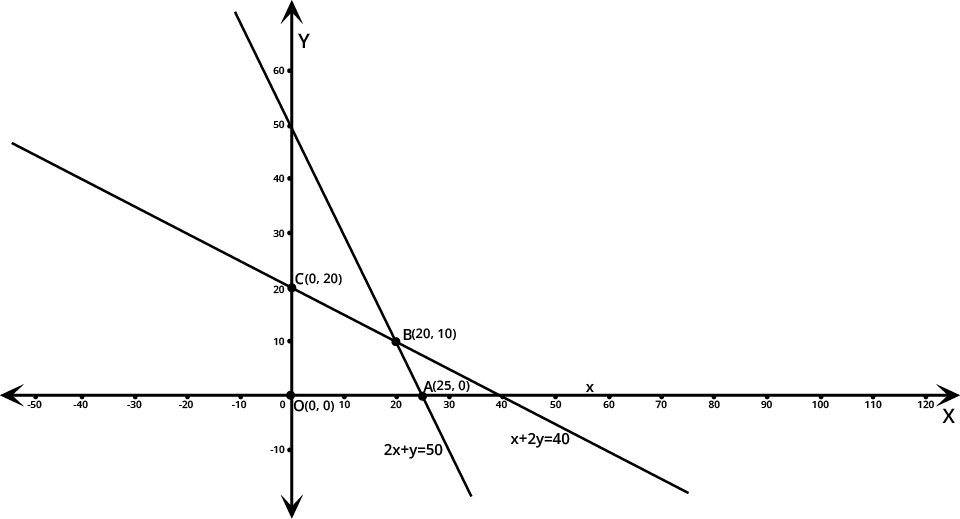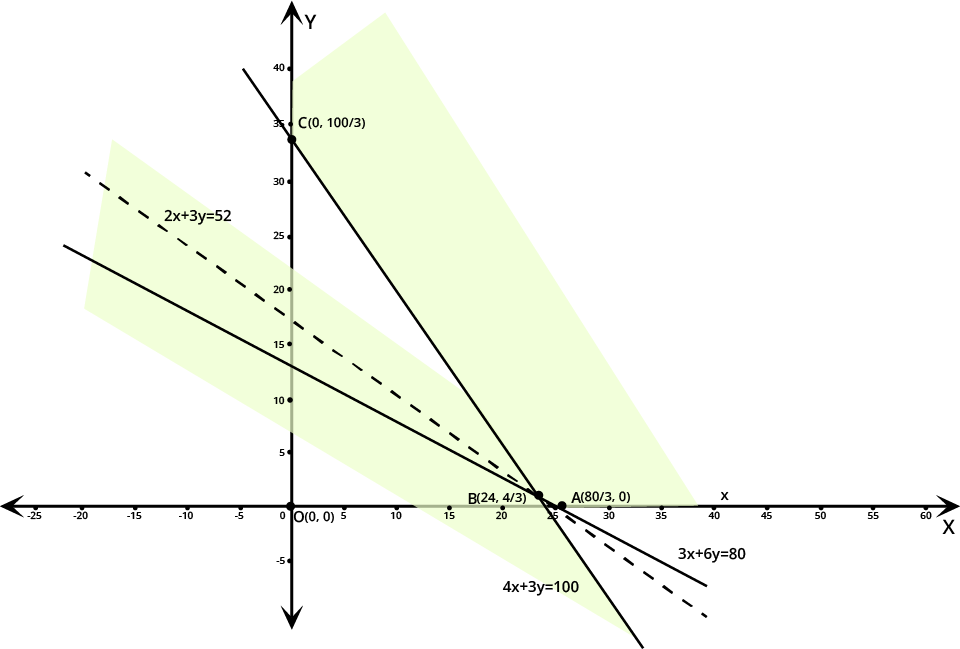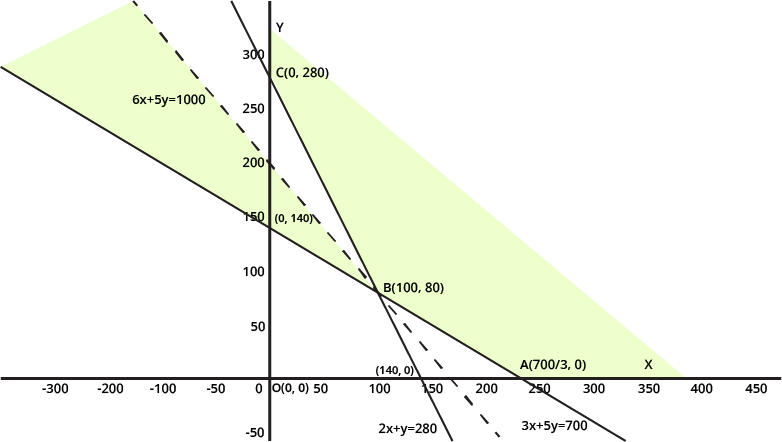NCERT Solutions for Class 12 Maths Chapter 12 Linear Programming





















FAQs on NCERT Solutions for Class 12 Maths Chapter 12: Linear Programming - Exercise 12.2
1. What are the topics covered in Class 12 Maths Chapter 12 Exercise 12.2 of NCERT textbook?
The NCERT Solutions for Class 12 Maths Chapter 12 Exercise 12.2 (Linear Programming) contains the following topics. Take a look below.
Different Types of Linear Programming Problems
Manufacturing problems
Diet problems
Transportation problems
2. What is taught in Class 12 Maths Chapter 12.2 of CBSE syllabus?
Class 12 Maths Chapter 12.2 Linear Programming deals with the in-depth concept of linear equations, linear inequalities and the application of it. All of these topics have already been discussed in the previous class. So, it is easier for the students to recollect the concepts. This chapter also introduces the concept of optimisation problems, linear programming, Graphical method of solving linear programming, Different Types of Linear Programming etc.
This chapter also covers multiple exercises in between or at the end of it. The answer to each question in every exercise is provided in a stepwise manner for better understanding of the students. These solutions are considered as the most helpful resources for self-study purposes and practice sessions.
3. Why should we opt for Vedantu’s NCERT Solutions for Class 12 Maths Chapter 12 Exercise 12.2?
A. Vedantu’s NCERT Solutions for Class 12 Maths Chapter 12 Exercise 12.2 are believed to be extremely useful for all the students preparing for the board examinations.
These solutions are created as per the CBSE curriculum.
These contain the solutions to the questions asked in the exercises of your NCERT textbook. Thus it is really helpful for self-study or self-assessment purposes.
Vedantu’s in-house subject matter experts who hold years of experience from the relevant field have created these solutions. Hence these are absolutely accurate and reliable.
Last but not least, NCERT Solutions for Class 12 Maths Chapter 12 Exercise 12.2 will help you in understanding the patterns of questions that you are going to come across in the final exam.
4. Can I download the NCERT Solutions for Class 12 Maths Chapter 12 Exercise 12.2 in PDF format?
Yes, NCERT Solutions for Class 12 Maths Chapter 12 Exercise 12.2 in PDF format are provided with a download option. Students who are willing to download these solutions should visit the official website of Vedantu i.e. vedantu.com and Vedantu app in order to do that. These NCERT Solutions offered by Vedantu can be accessed online and offline.
5. What resources does Vedantu offer to understand and excel in Class 12 Mathematics Chapter 12 Exercise 12.2 easily?
At Vedantu, we work tirelessly intending to redefine remote learning and provide overall growth to our students. We understand that Class 12 Mathematics is a significant subject for which students require all the help they can get. Hence we bring them several study resources like:
NCERT Solutions with added explanations.
Important Questions
Revision Notes
Sample papers
Previous years' question papers.
Free live classes
Free masterclasses
Free conceptual videos.
All these resources are available free, for all the chapters, including Class 12 Chapter 12 Maths.
6. How to score perfect marks in Class 12 Mathematics Chapter 12 exams?
Getting a perfect score in Class 12 Mathematics board exams is not an overly difficult feat. With some smart strategies and hard work, you too can get a perfect score:
Devise a study plan at the start of the academic year and follow it religiously.
Divide the topics in the chapter as per the weightage and study accordingly.
Work to understand the concepts and be thorough with the NCERT textbook and solutions.
Practice rigorously using sample papers and previous years’ question papers.
7. What steps should Class 12 students take to ensure that they ace Mathematics Exercise 12.2?
Exercise 12.2 is based on different kinds of Linear Programming problems including manufacturing, diet, and transportation problems. To master this exercise:
Read the explanation provided in the textbook.
Pay attention in class. Ask the teacher for clarity.
Refer to conceptual videos, masterclasses, and explanations by Vedantu for this chapter.
Solve the exercise questions yourself first.
Refer to Vedantu's NCERT Solutions for Exercise 12.2 for enhanced understanding.
Practice from sample papers and previous years’ question papers exhaustively.
8. Are Vedantu's NCERT Solutions for Class 12 Mathematics Exercise 12.2 suited for CBSE board examination preparation?
Vedantu’s NCERT Solutions for Class 12 Mathematics Exercise 12.2 are perfectly suited for board exam preparation. These solutions are prepared by experts who have taught Class 12 Mathematics for years and have mentored students for board examinations. NCERT Solutions don’t get any more authentic than at Vedantu. These solutions are regularly updated to suit the latest syllabus guidelines by CBSE. The solutions are explained in simple steps teaching the students the correct way of answering in exams. Additional explanations and diagrams are provided wherever necessary.
9. What's the objective of teaching Linear Programming to Class 12 students?
Linear Programming finds several uses in real life. It is a technique used to determine the ideal use of the resources available at hand. Using Linear programming, the most optimal solution to a problem is determined using the available constraints. Mastering this chapter will allow you to improve your problem-solving skills. Linear programming is used for allocating materials, manpower, resources, etc. it can be also used in planning finances, transportation, and routing. For explanations and NCERT Solutions on this topic, visit the vedantu website (vedantu.com) and the app.






